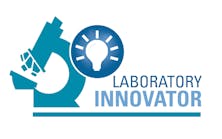POL Symposium helps physicians become CLIA-certified lab directorsThe 17th annual Physicians Office Laboratory (POL) Symposium, jointly sponsored by the University of Maryland School of Medicine and COLA, a national laboratory accreditation organization, was held Oct. 31 through Nov. 3 in Baltimore. Since 1990, Nancy Dennis, program director of the POL Symposium, has been perfecting her meeting to help physicians understand good laboratory practices. Once CLIA 88 (Clinical Laboratory Improvement Amendments of 1988) became effective in September 1992, she upgraded the programs content to include 20 continuing medical education (CME) credits of CLIA 88 compliance education. The 20 CME credits enable physicians to meet the qualification requirement for directors of a CLIA moderate-complexity laboratory. This is currently the only meeting in the country that offers the necessary credit hours for physicians to meet these requirements.This years program started on Halloween night coincidently, the same date CLIA 88 was signed into law by President Reagan. In addition to CLIA education, attendees could choose to receive updates on regulatory and management issues associated with operating a physician office laboratory. This years attendees of the intensive two-and-a-half-day meeting had the opportunity to obtain their CME credits in 19 general session presentations, four of the 17 two-hour workshops, and two working lunches. The following highlights several points made at the meeting.Advanced Beneficiary NoticesOn Oct. 1, the industry was required to initiate use of a new Advanced Beneficiary Notice (ABN) issued by the Centers for Medicare and Medicaid Services (CMS). Like the old ABN, the new form is to be given to a Medicare beneficiary when there is a likelihood that he or she will need to be financially responsible for the provided laboratory service if the Medicare program does not pay. An ABN empowers a beneficiary in the decision of whether or not a laboratory service should be rendered when the beneficiary is going to be responsible for payment. One difference with the new ABN is the option to provide the beneficiary with information about the cost of the service. Although providing cost information is not a CMS requirement, if it is provided, it is important that it accurately reflect the beneficiarys financial liability. If the cost estimate is high, there is fear this may influence a beneficiary to choose not to order the service because of worries about the expense. On the other hand, an underestimate may cause a beneficiary to opt for the service, which then may lead to a financial hardship when the higher bill arrives. The latter situation is almost certain to reflect poorly on the entity that issued the
ABN.National coverage decisionsEffective Nov. 25, the laboratory industry must adhere to National Coverage Decisions (NCDs) for 23 tests that encompass 63 Current Procedural Terminology (CPT) codes. The NCDs will replace Local Medical Review Policies (LMRPs) where duplication exists. The NCDs cover 43 percent of all Medicare carrier (payers) laboratory services and 51 percent of carrier payments for laboratory services. An NCD is a Medicare coverage policy that defines medical necessity for certain Medicare services. Physicians use these policies to determine when it is appropriate to provide an ABN to a beneficiary. These polices will be provided to physicians via their Medicare carriers notices. The policies can be downloaded via the Internet:
http://cms.hhs.gov/manuals/pm_trans/AB02110.pdf.Final CLIA regulationsIts only been 10 years since the effective date of CLIA 88, and the final regulations are due out by the years end. The purpose of the final CLIA is to address all the comments (60,000 of them) that were generated by the rule published in 1992, update and finalize the quality control regulations, finalize the high-complexity director requirements, and consolidate and refocus the current requirements to read like a specimen going through a laboratory. The rearrangement of the requirements will remove redundancy and simplify understanding them. The current subparts J: Quality Control, K: Patient Test Management, and Q: Quality Assurance will be combined into two parts: Facility Administration and Quality Systems. New CPT codesThe issuance of the 2003 CPT code book marks another year where significant changes have been made to the laboratory codes. The majority of changes are in the hematology codes. The table at right describes the 2003 laboratory CPT code changes.
December 2002: Vol. 34, No. 12©
2002 Nelson Publishing, Inc. All rights reserved.
ABN.National coverage decisionsEffective Nov. 25, the laboratory industry must adhere to National Coverage Decisions (NCDs) for 23 tests that encompass 63 Current Procedural Terminology (CPT) codes. The NCDs will replace Local Medical Review Policies (LMRPs) where duplication exists. The NCDs cover 43 percent of all Medicare carrier (payers) laboratory services and 51 percent of carrier payments for laboratory services. An NCD is a Medicare coverage policy that defines medical necessity for certain Medicare services. Physicians use these policies to determine when it is appropriate to provide an ABN to a beneficiary. These polices will be provided to physicians via their Medicare carriers notices. The policies can be downloaded via the Internet:
http://cms.hhs.gov/manuals/pm_trans/AB02110.pdf.Final CLIA regulationsIts only been 10 years since the effective date of CLIA 88, and the final regulations are due out by the years end. The purpose of the final CLIA is to address all the comments (60,000 of them) that were generated by the rule published in 1992, update and finalize the quality control regulations, finalize the high-complexity director requirements, and consolidate and refocus the current requirements to read like a specimen going through a laboratory. The rearrangement of the requirements will remove redundancy and simplify understanding them. The current subparts J: Quality Control, K: Patient Test Management, and Q: Quality Assurance will be combined into two parts: Facility Administration and Quality Systems. New CPT codesThe issuance of the 2003 CPT code book marks another year where significant changes have been made to the laboratory codes. The majority of changes are in the hematology codes. The table at right describes the 2003 laboratory CPT code changes.
December 2002: Vol. 34, No. 12©
2002 Nelson Publishing, Inc. All rights reserved.




